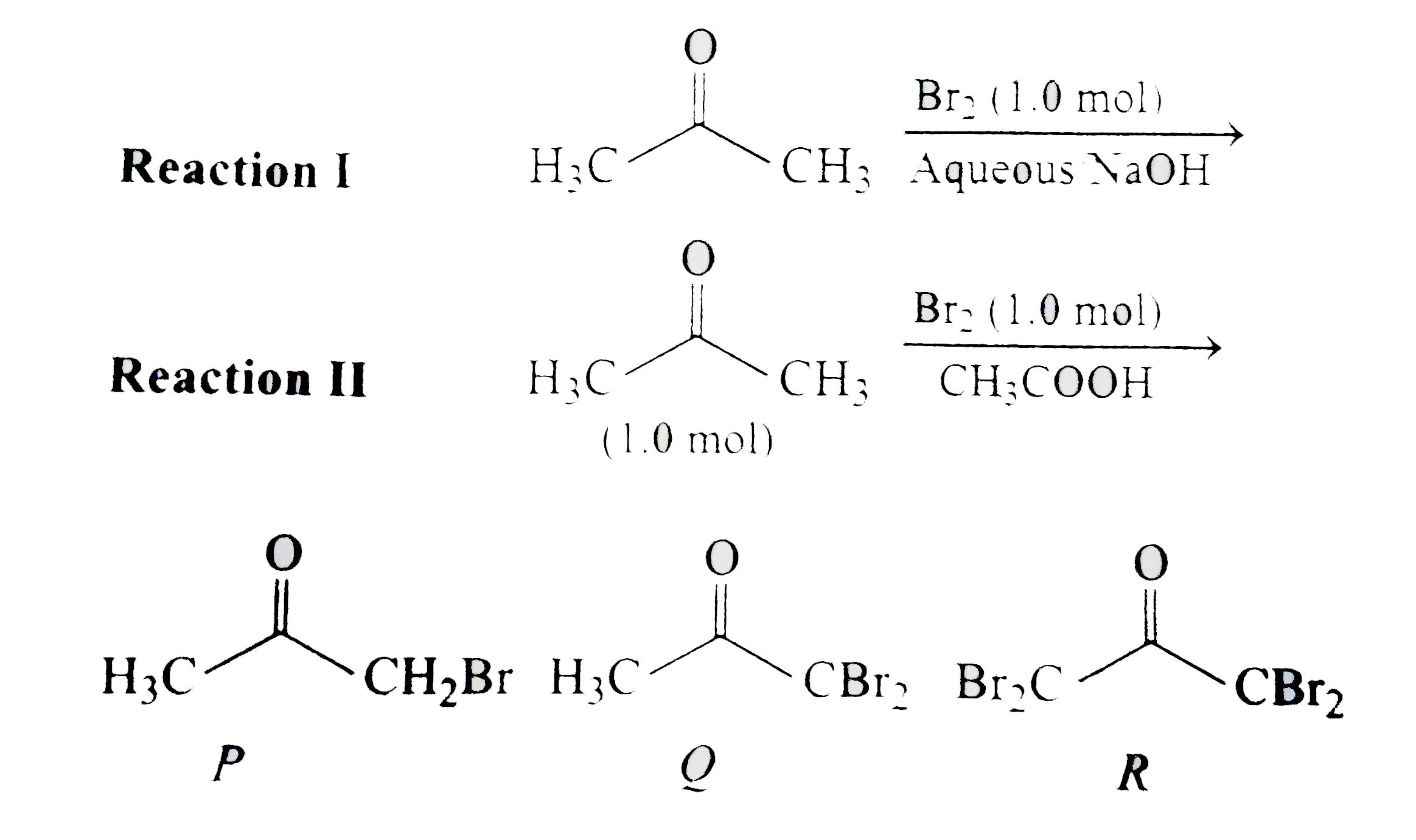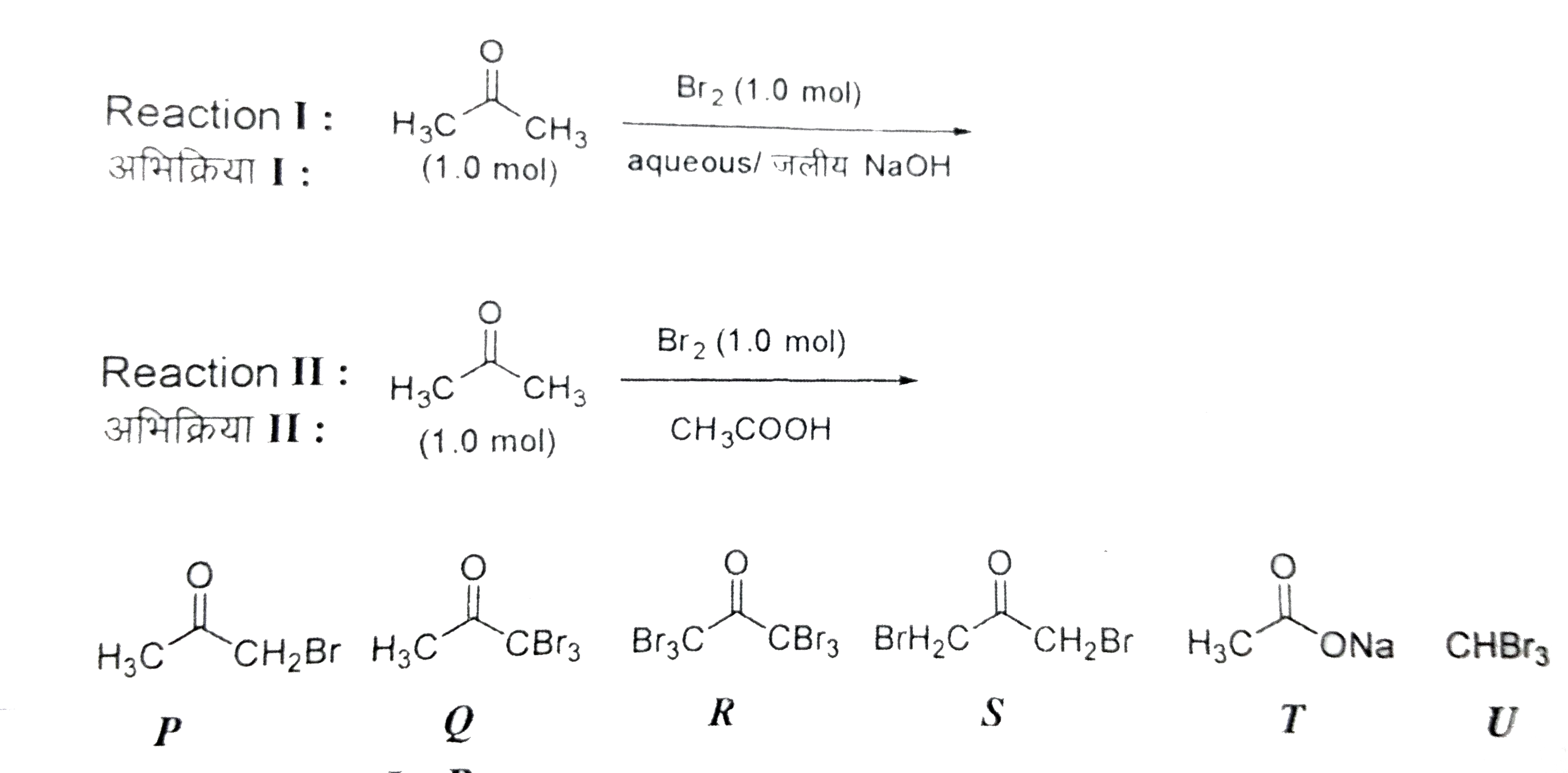
The compound(s) in the reaction (iv) is/are:
A
Resolove (+) and (−) forms of 
B
Non-resolvable from of (G)
C
Resolvable (+) and (−) fomrs of 
D
Non-resolvable form to (H).
Video Solution
Text Solution
The correct Answer is:a

If a least three of the 2,2'.6, and 6' are occupied by sufficiently large groups, free rotation about the single bond joining the two phenyl each ring has no vertical plane of symmetry. This restricted rotation gives rise to optical acticity due to molecule being asymmetrical as a whole. Hence, 6− nitrobiphenyl −2,2' dicarboxylic acid (a) and 6.6'− diamano −2,2' dimenthyl biphenyl (b) have resolaved. If the substituent groups are large enough. then only two groups in the o− and o'− position will cause restricted rotation , e.g. bipheny 1−2,2' disulphotic acid (c) has been shown to be optically active.
So, (a),(b), (c) are resolvable.
The cause of restricted rotation is mainly due to steric effects of the groups in the o− and 0'− positons (not at m and m',p and p' ) this type of steroisomerism arising from restricted rotaion about a single bond and where the steroisomers can be isolated is called atropisomerism and the isomers are called attopisomers.
|
Topper's Solved these Questions
- AROMATIC COMPOUNDS AND ALKYL AND ARYL HALIDES Book:CENGAGE CHEMISTRYChapter:AROMATIC COMPOUNDS AND ALKYL AND ARYL HALIDES Exercise:Exercises Multiple Correct
Explore 35 Videos
- AROMATIC COMPOUNDS AND ALKYL AND ARYL HALIDES Book:CENGAGE CHEMISTRYChapter:AROMATIC COMPOUNDS AND ALKYL AND ARYL HALIDES Exercise:Exercises Multiple Correct Answers Type
Explore 12 Videos
- AROMATIC COMPOUNDS AND ALKYL AND ARYL HALIDES Book:CENGAGE CHEMISTRYChapter:AROMATIC COMPOUNDS AND ALKYL AND ARYL HALIDES Exercise:Exercises Linked Compreshension Type
Explore 11 Videos
- APPENDIX INORGANIC VOLUME 2Book:CENGAGE CHEMISTRYChapter:APPENDIX INORGANIC VOLUME 2Exercise:Short Answer Type
Explore 179 Videos
- BIOMOLECULESBook:CENGAGE CHEMISTRYChapter:BIOMOLECULESExercise:Exercises Archives (Analytical And Descriptive)
Explore 8 Videos
Similar Questions
Knowledge Check
After completion of the reactions (I and II) , the organic compound (s) in the reaction is/are

 Areaction I:P and reaction II:PBreactionI:U, acetone and reaction II:Q, acetoneCreaction I:T, U acetone and reaction II:PDreaction I:R, acetone and reaction II:S, acetone
Areaction I:P and reaction II:PBreactionI:U, acetone and reaction II:Q, acetoneCreaction I:T, U acetone and reaction II:PDreaction I:R, acetone and reaction II:S, acetoneAfter completion of the reaction (I and II), the orgnanic compound(s) in the reaction mixtures is(are)
 AReaction I : P and Reaction II : PBReaction I : U, acetone and Reaction II : Q, acetoneCReaction I : T, U acetone and Reactioin II : PDReaction T : R, acetone and Reaction II : S, acetone.
AReaction I : P and Reaction II : PBReaction I : U, acetone and Reaction II : Q, acetoneCReaction I : T, U acetone and Reactioin II : PDReaction T : R, acetone and Reaction II : S, acetone.After completion of the reactions (I and II ), the organic compound (s) in the reactions mixtures is (are )
 AReactions I : P and Reactions II: PBReaction I: U, acetone and Reaction II: Q acetoneCReactions I : T,U acetone and Reactions II : PDReaction I : R , acetone and reaction II: S , acetone
AReactions I : P and Reactions II: PBReaction I: U, acetone and Reaction II: Q acetoneCReactions I : T,U acetone and Reactions II : PDReaction I : R , acetone and reaction II: S , acetone

The compound(s) in the reaction (i) is/are:
View Solution
The compound(s) in the reaction (ii) is/are:
View SolutionAfter completion of the reactions (I and II) , the organic compound(s) in the reaction mixtures is(are)

View SolutionAfter completion of the reaction (I and II), the organic compound(s) in the reaction mxitures is (are)


View SolutionAfter completion of the reactions (I and II) , the organic compounds (s) in the reaction mixtures is :

View Solution

